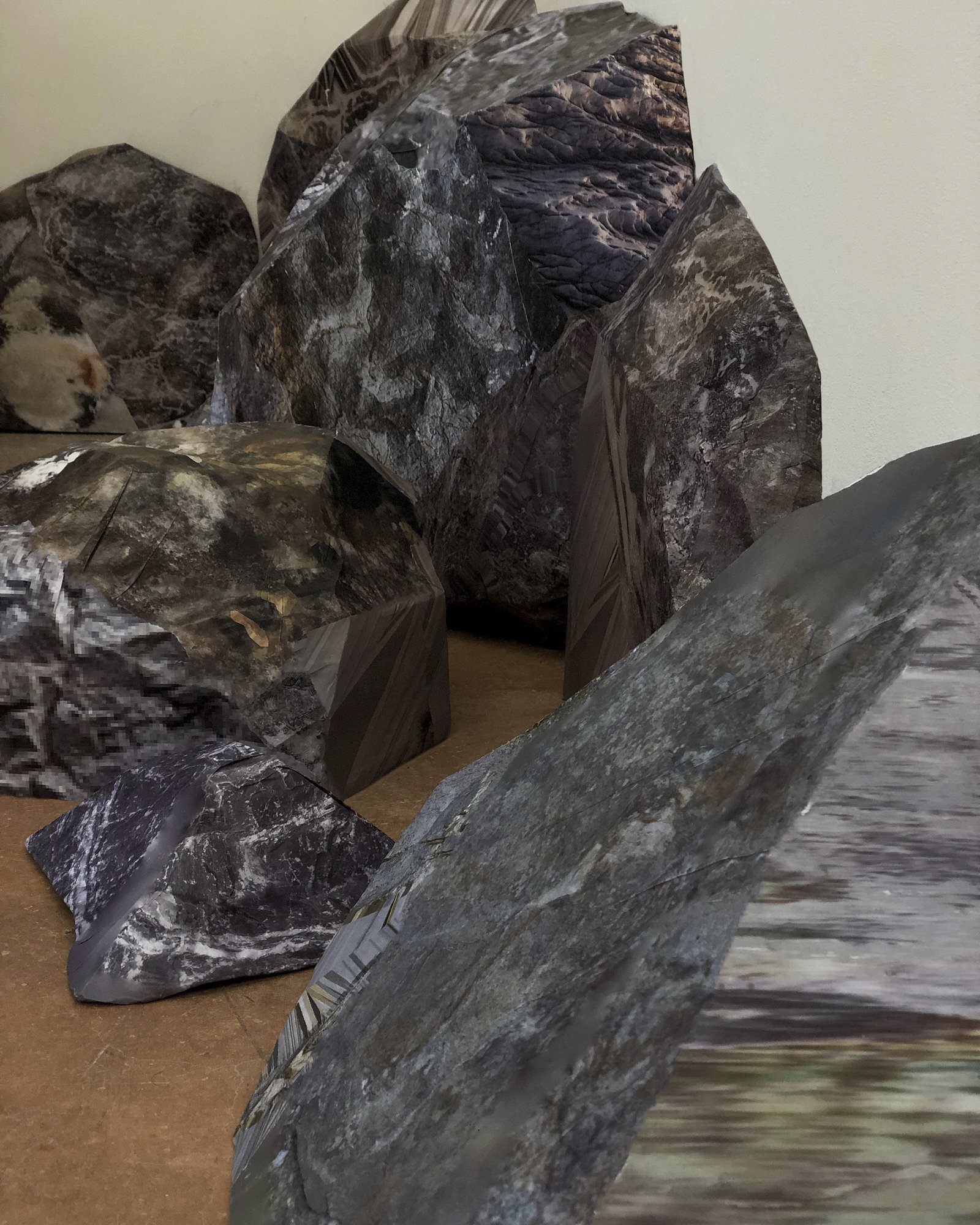
In Chinese traditional architecture, rockery is a way to place rocks as mountains in a smaller scale. The beauty of it is to watch the rocks from different perspective, each step creates a different view. The multiple perspective is also used in Chinese traditional landscape paintings.
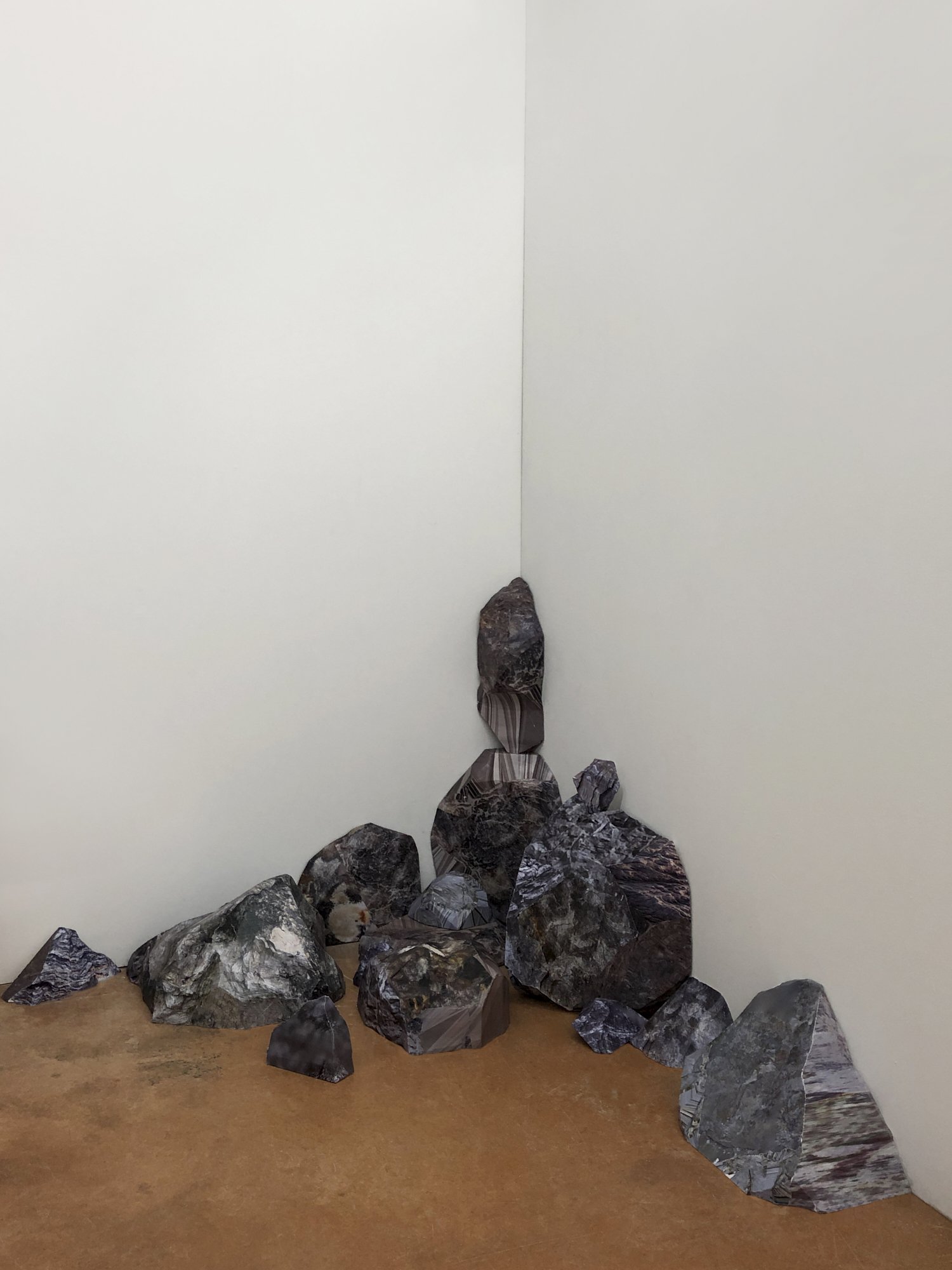
Rendering optimization in 3D video games is about to reduce the shading and resolution of the 3d models when they are far away from the view. It creates a similar experience as rockery when you’re walking back and forth a scene.
The Installation “Unnecessary Mountains to Return To” brings a digital 3d scene to our physical space. It shows the rocks are crossing the wall. When rocks from the nature interact with industrial buildings, it create this chaotic feeling to the presence. When stepping closer, you might notice the rocks are nothing like the rocks in the nature, those are more similar to the rocks in 3D with mixed texture.
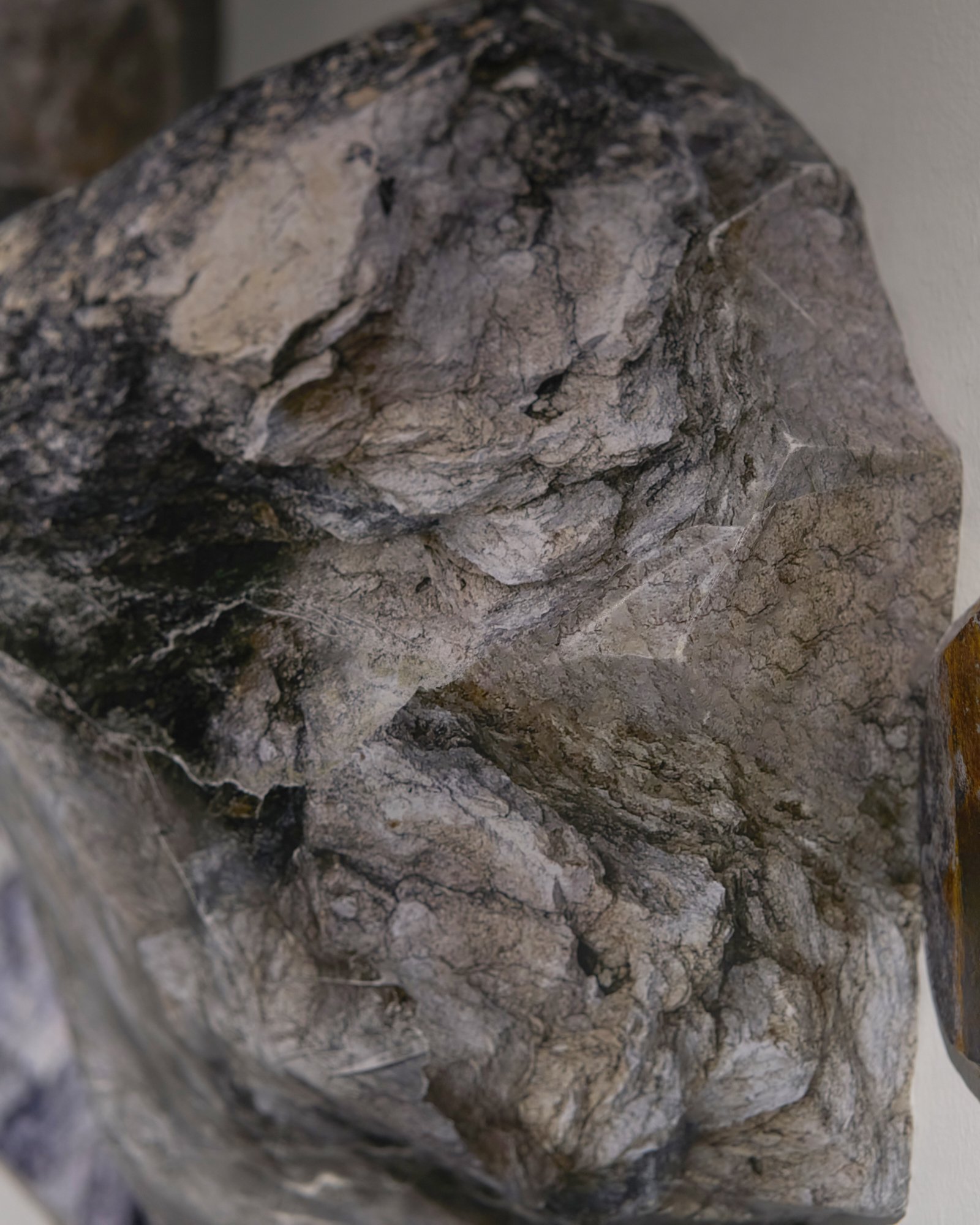
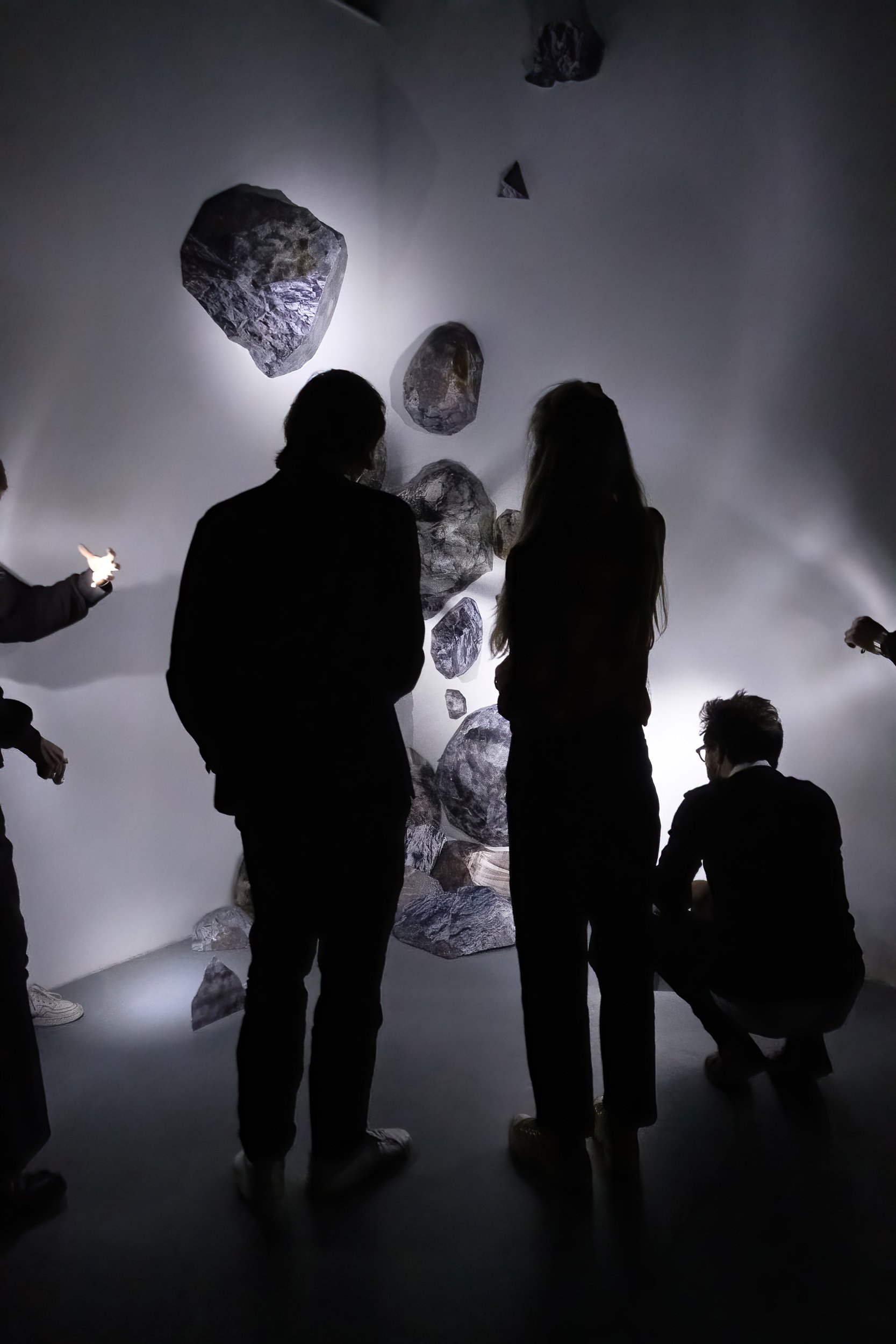
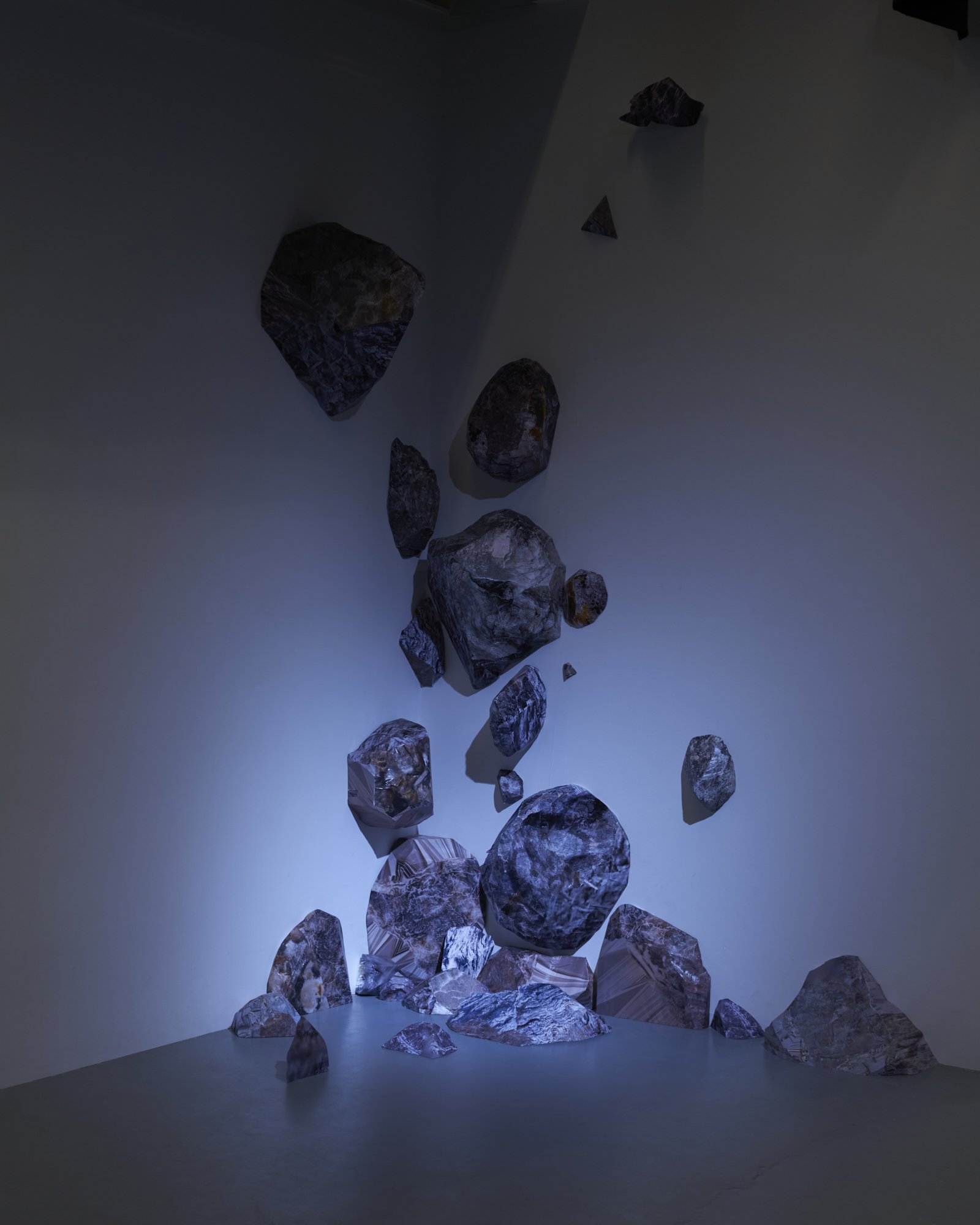
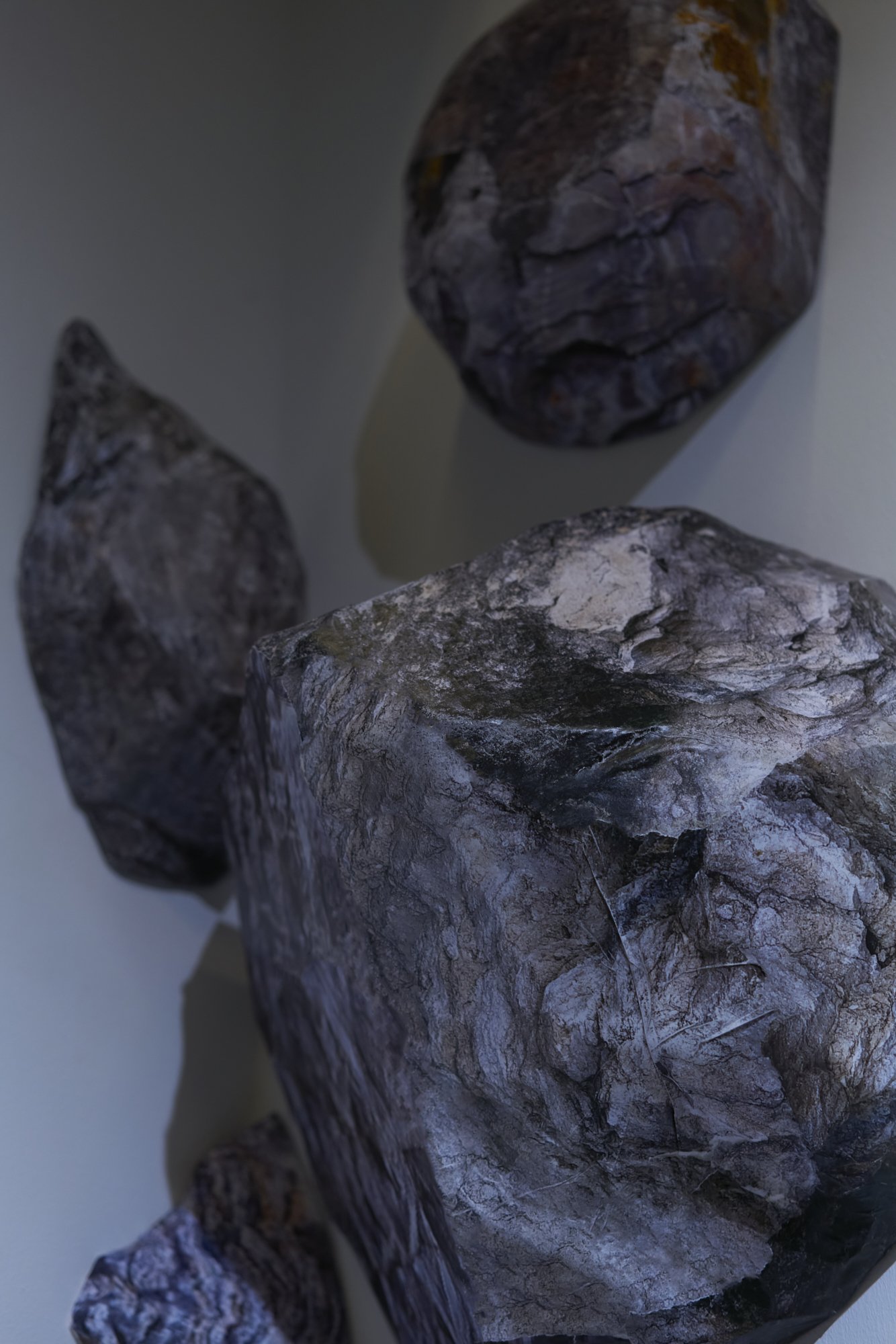
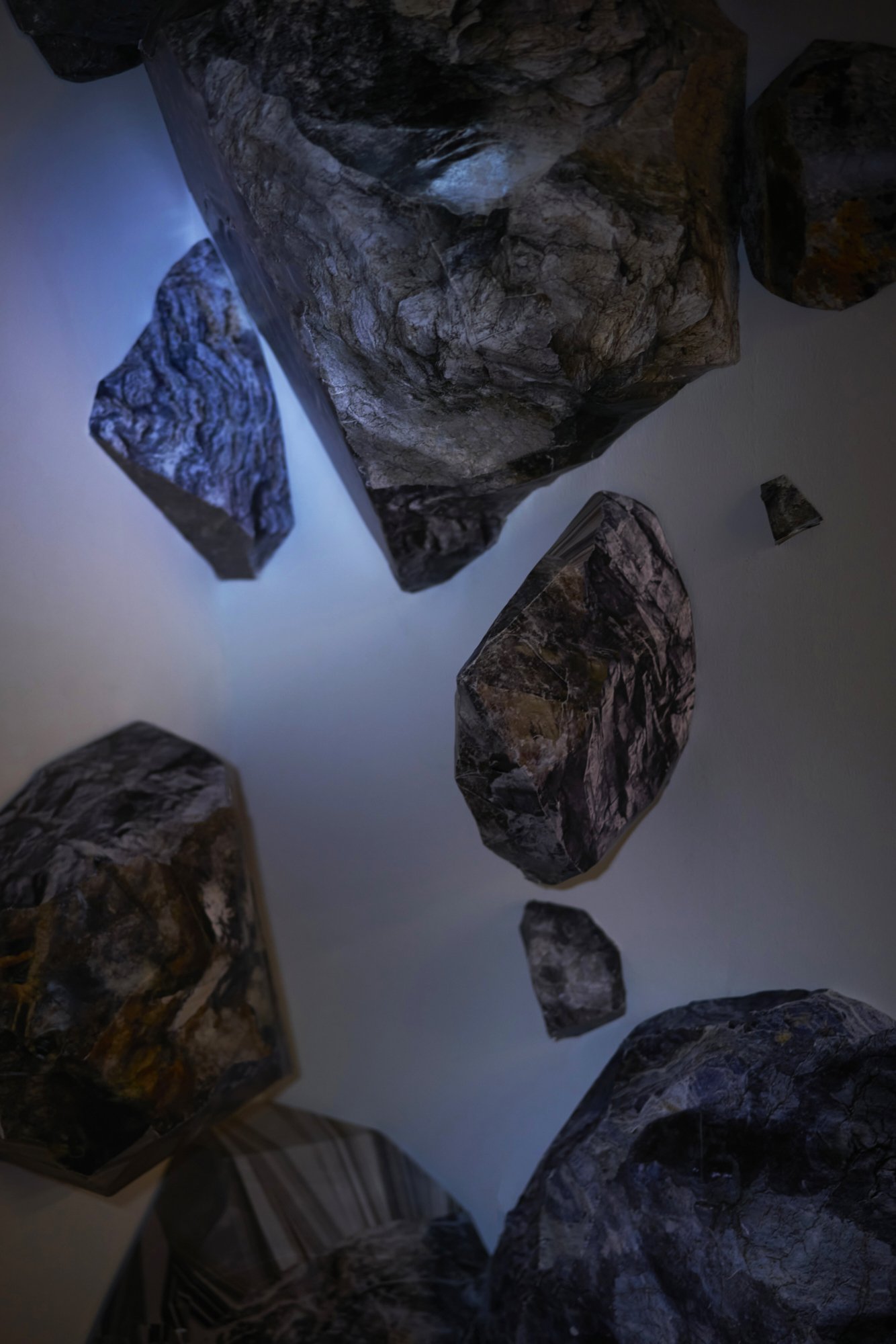
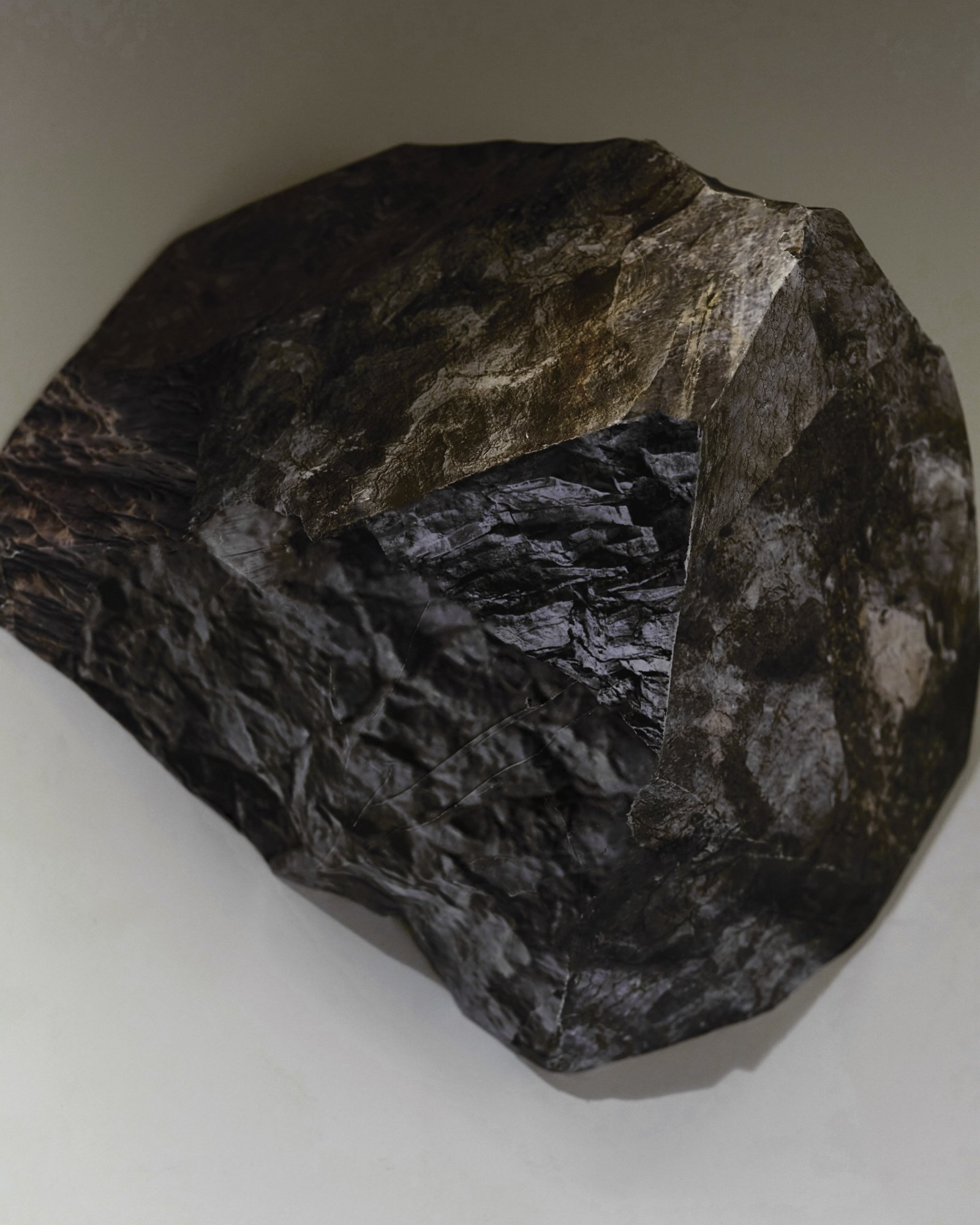
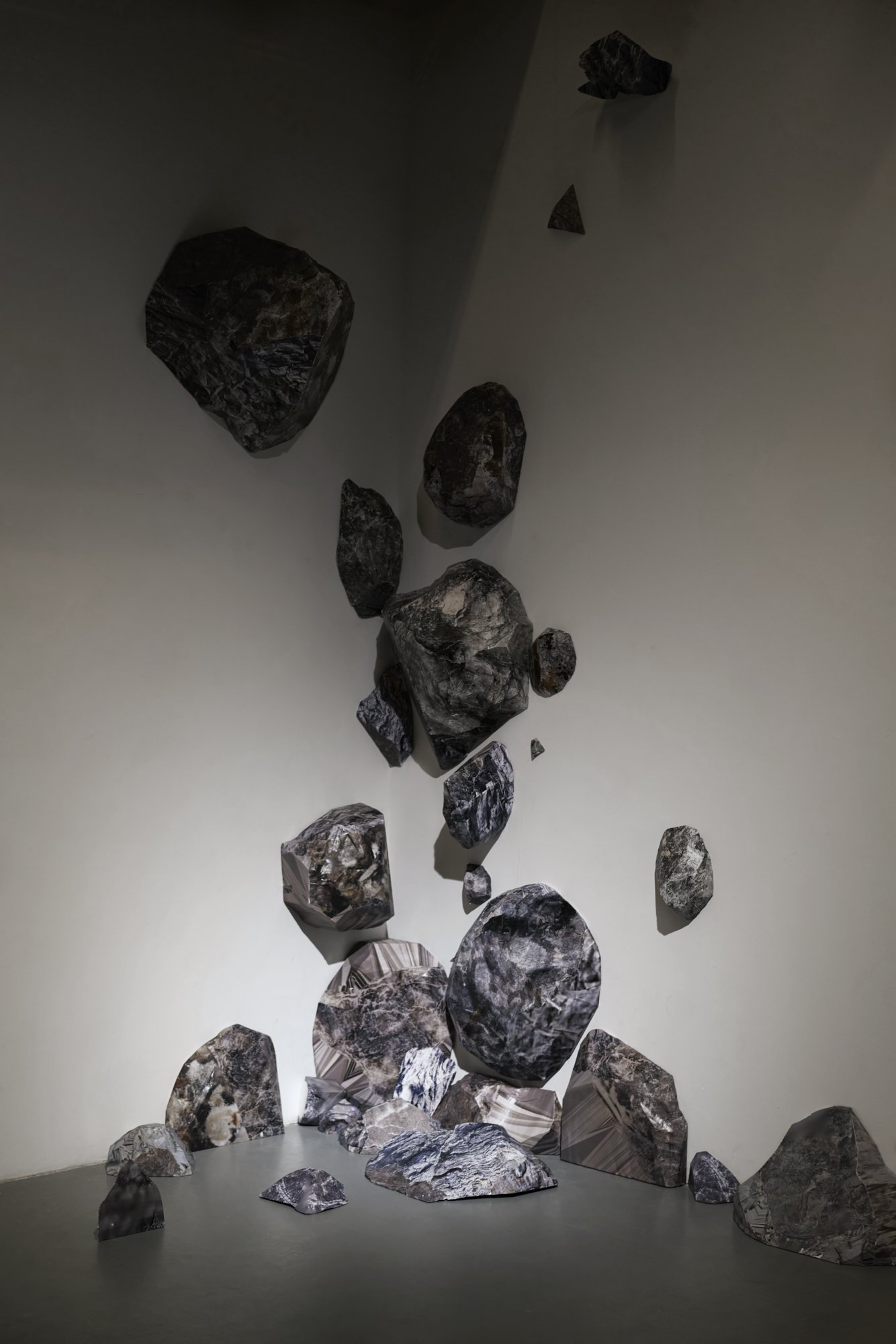
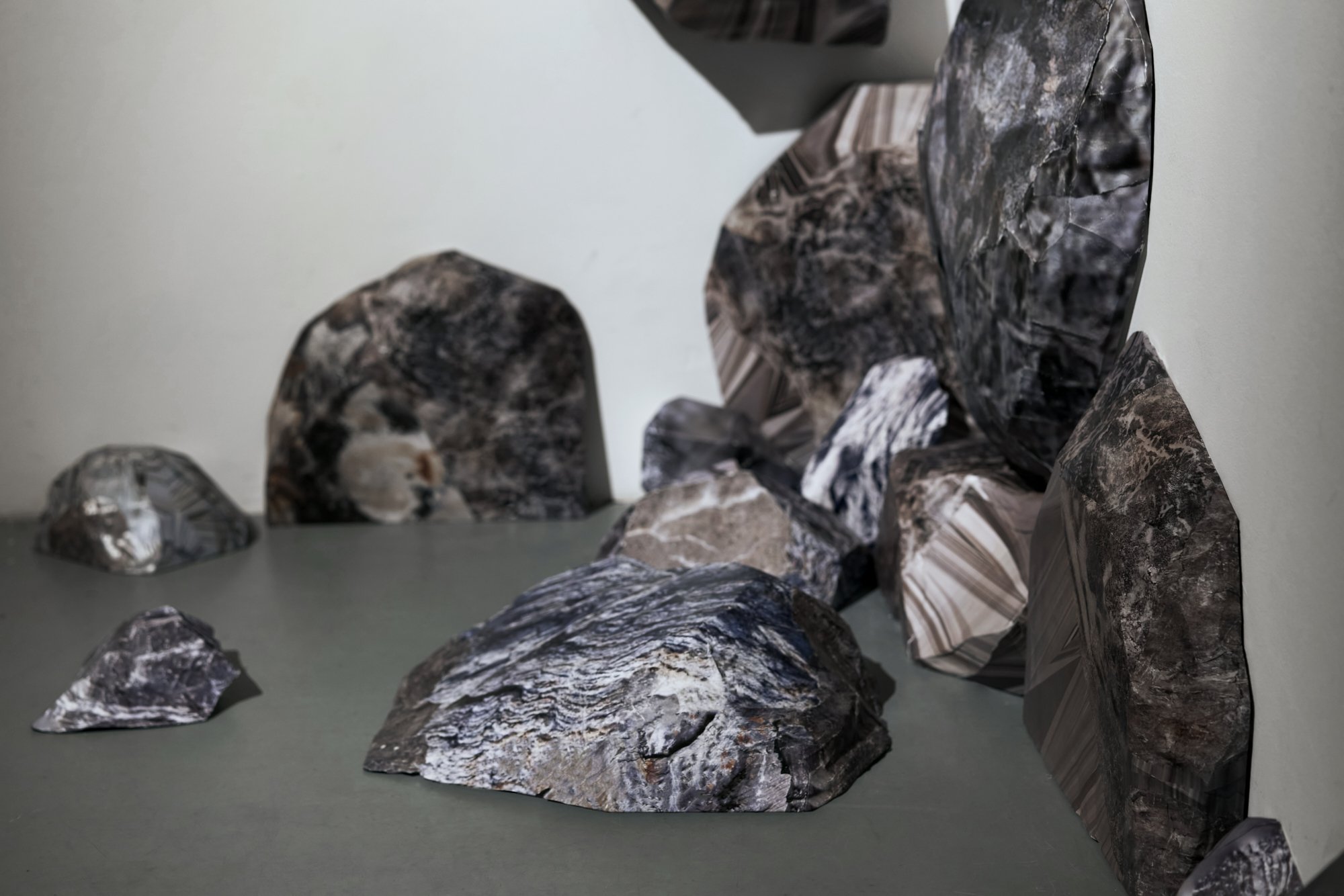










In Chinese traditional architecture, rockery is a way to place rocks as mountains in a smaller scale. The beauty of it is to watch the rocks from different perspective, each step creates a different view. The multiple perspective is also used in Chinese traditional landscape paintings.
Rendering optimization in 3D video games is about to reduce the shading and resolution of the 3d models when they are far away from the view. It creates a similar experience as rockery when you’re walking back and forth a scene.
The Installation “Unnecessary Mountains to Return To” brings a digital 3d scene to our physical space. It shows the rocks are crossing the wall. When rocks from the nature interact with industrial buildings, it create this chaotic feeling to the presence. When stepping closer, you might notice the rocks are nothing like the rocks in the nature, those are more similar to the rocks in 3D with mixed texture.